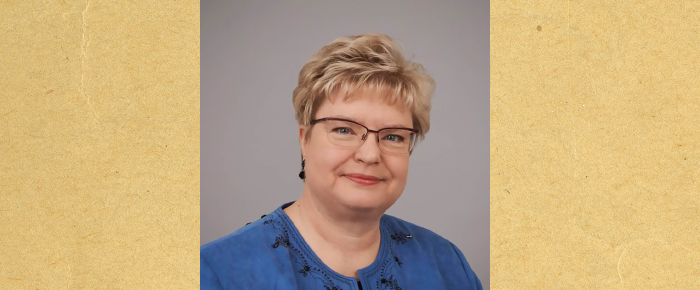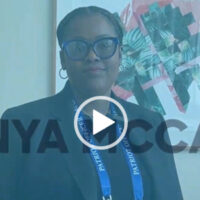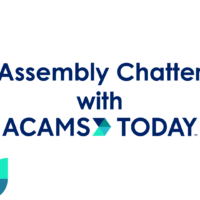
ACAMS Today had the privilege of speaking to Mary Bashore about the U.S. Capital Chapter’s recently adopted position of executive board director emeritus and on her recent nomination to fill this role.
Bashore is the president of Bashore Business Solutions, LLC. In this role she draws on extensive experience and comprehensive knowledge in anti-money laundering (AML) activities and financial institution operations to advise clients on risk management issues.
During her federal career, Bashore advanced from a financial institution examiner to become the Bank Secrecy Act/anti-money laundering (BSA/AML)specialist and technical advisor to staff responsible for examination and enforcement activities for over 1,400 financial institutions. Bashore led, developed and trained staff on various systems and effective conduct of BSA examinations, analyzed data and provided guidance to internal and external parties. She prepared administrative actions, handled the most complex and sensitive regulatory issues, and closely coordinated with the Financial Crimes Enforcement Network and other government agencies.
As a recognized leader and collaborator, Bashore taught examiners at the Federal Financial Institutions Examination Council and serves on the Executive Committee of the West Coast AML Forum. In addition, she joined the U.S. Capital Chapter in June 2012. Since joining, the chapter has more than doubled the chapter’s membership, maintained communications with ACAMS, increased attendance at learning events, written articles and communication pieces, engaged individual members, and promoted the chapter. In addition, she is a frequent point of contact for fellow executive board directors, as well as chapter members. Based on her experience and participation in the chapter, on June 30, 2016, she was designated as the executive board director emeritus for the ACAMS U.S. Capital Chapter.
ACAMS Today: You were recently nominated as the U.S. Capital Chapter’s executive board director emeritus—Congratulations! What will your new role as executive board director emeritus entail?
Mary Bashore: My new role is going to be more of an advisory capacity. I will no longer have a vote on board decisions and I won’t have the specific responsibilities of a board member. However, I will still be actively engaged in the affairs of the chapter. In addition, I will be bridging the transition between current board members, future board members and new people who would like to get involved with the chapter. I will still be available as an advisor to help people get into their new role and to help develop new up-and-coming leadership. I am going to be able to leverage my experience and the knowledge that I’ve gained as a board member and to share that with my fellow board members and new ones who are interested in moving up.
AT: How long will you serve as executive board director emeritus?
MB: We set it up for a three year term, which of course is very flexible. I can resign from the position before three years, but I anticipate serving for three years and then having fully transitioned at that point to move on. But of course, the door is always open. My board members would like me to stay longer and they are still counting on me for my help as the chapter grows and continues to do more things. However, I think I’ll be able to step back in three years and see the fruits of my labor, so to speak.
In terms of extending the term, chapters looking to implement this role have the flexibility to do what works for them. I have talked to people in other chapters from time to time to get their ideas and John Byrne was thinking that other chapters may want to adopt a similar model. However, it doesn’t have to be exactly the way we’ve done it. Any other chapter is welcome to adopt it as we have done it or put it on the back burner. Since the director emeritus doesn’t have a vote, it is up to the current board to craft the direction of the chapter.
AT: What made this an important next step to adopt for the U.S. Capital Chapter?
MB: I think it was an important next step for us because I felt that I had been on the board long enough and that I had mastered my role and I was ready to turn it over to someone else. In addition, I thought that other people on the board might be thinking along the same lines. All of us have been on the board for several years and we’ve been in the same position. I wanted to see some turnover. However, I wanted to see an orderly turnover where we kept some experience but made room for new people that were interested in taking on a larger role. So rather than resigning from the board and dumping it on the lap of a new board member who has no background or way of getting up to speed, we devised this as a way to have an orderly transition. And that seems to be working out very well.
AT: How is your chapter working to implement this role?
MB: The transition has been totally seamless because everyone knows each other very well and we’ve already been able to count on each other and work together. In addition, we incorporated a couple new people on the board a few months ago. It has actually been a transition that has been in the works for about a year. It is something that we just kept talking through little by little. About a year ago, I raised the subject to my fellow board members about transitioning and recruiting new people and opening up the opportunity for other people to come on the board. I’ve kind of maxed out on what I think I can contribute as a board member, so I wanted to go into a new direction. I like to master something and then move on. So it accomplishes several things.
AT: What impact will this position have on the chapter as a whole?
MB: Well, I’m hoping for two things: 1) That we don’t lose the expertise of people like me who have had the experience of serving on the board and have really taken the position to a new level and 2) to encourage people to become members of the chapter and to engage them by also providing opportunities for them to take on a larger role. For instance, we have a program committee that has a number of members involved in planning learning events and we hope that will be a transition learning step to recruit people for future board members. We already have an eye on a couple of people that we think will be good future board members. So much of it depends on availability and willingness. We have a lot of newer and younger people in the AML field that we would like to get involved in the chapter because that’s where the growth is going to come from.
AT: How did the nomination process work for executive board director emeritus?
MB: When we proposed the idea of a board director emeritus, we laid out what we thought were some reasonable conditions. Thus, the first step for the board was to adopt the position in general and look at what the role is and what it’s not. The nomination process was a separate item where we took the qualifications for board director emeritus and we put together an individual’s background and accomplishments to see how he/she fits into that. The nominations were written and distributed by email and then adopted, so that it could be incorporated into the minutes and made official for the record. Co-chair Dennis Lormel and three or four others nominated me based on what they already knew about my background. The decision was basically unanimous and I got a lot of kudos afterwards from different people who said, “You know this is really a great idea and not something that I would have thought of. This is something other people can use.” The chapter was very happy and excited to not lose me as a contributing member of the chapter and to have a different role and different way to use people in their expertise. After nominations, we notified ACAMS, so that we could have it reflected on the chapter website and communications.
AT: Who is eligible and what attributes did your chapter consider when nominating?
MB: In order to be considered, a person must be a current or former member of the executive board of the ACAMS U.S. Capital Chapter who:
- Has served on the executive board of directors with distinction for at least three years;
- Held an important leadership role and made or continues to make significant contributions;
- Engaged in major volunteer or advocacy activities in his/her service on the board;
- Completed the term(s) for which he/she was appointed; and
- Participates in or leads U.S. Capital Chapter activities (e.g., learning events, communications, member relations, etc.).
If you look at the qualifications carefully, nearly everybody who is on our board could qualify to be a board director emeritus at some point
If you look at the qualifications carefully, nearly everybody who is on our board could qualify to be a board director emeritus at some point. All of us have been on the board for more than three years and all of us have coordinated learning events at different times. Some people have made more significant contributions than others, but sometimes a person’s contributions are behind the scenes and people don’t see it. But nearly everybody on our board would qualify for nomination at some point.
AT: What advice do you have for chapters looking to adopt this new role?
MB: There’s a lot of different ways to implement this role. I think part of it is to build on the success that you have but also create an opportunity for others to get engaged. This way everything does not fall on one or two people that will have to pull the load.
Individuals looking to serve on the board have an advantage in terms of personal and professional growth. As a board member, you make closer contacts not only with your fellow board members but also with other members of the chapter and with ACAMS. The first year as a board member you are learning the ropes. The next year you have learned where you fit in with the board and you start doing things and thinking of the future and how you can make the chapter even better. Down the road it is important to consider how the chapter can continue to build on the successes of the chapter, engage chapter members and make room for new people. This new role can be a good way to do this; however, it is not the only way. But maybe it is a good way to engage everyone who is interested in having an active role in the chapter.
Also, I think it’s important to listen to the members. At networking or learning events people tend to stay at the end to talk—that’s where some of your best work can happen because people feel free to talk to you. You establish relationships and they start to throw out ideas that typically start off with something like: “Wouldn’t it be nice if…” or “Have you thought about having a program on…” or “I heard a really good speaker. It would be great if this person came and did a presentation for the chapter.”
AT: How do you see your chapter growing in the next couple of years?
People are hungry for knowledge and to listen to people who are experts in the field
MB: I don’t have a number of what I think the chapter membership could be, but I am convinced that our numbers are up because we provide value (e.g., learning events). People are hungry for knowledge and to listen to people who are experts in the field. They want to come together and share their questions and concerns with other people. We have a tremendous variety in our chapter because we have a strong governmental presence, we have strong ties with law enforcement, we have large institutions and we also have a lot of smaller community banks, credit unions and other nonbank entities in our membership. The variety is great and people are in all different stages in their career. I think we are in a unique position here to come together and discuss new ideas to grow. Part of it is the variety. We have access to some terrific people who are experts in their field and we have a lot of energetic people starting off in their careers. So I see great potential there.










